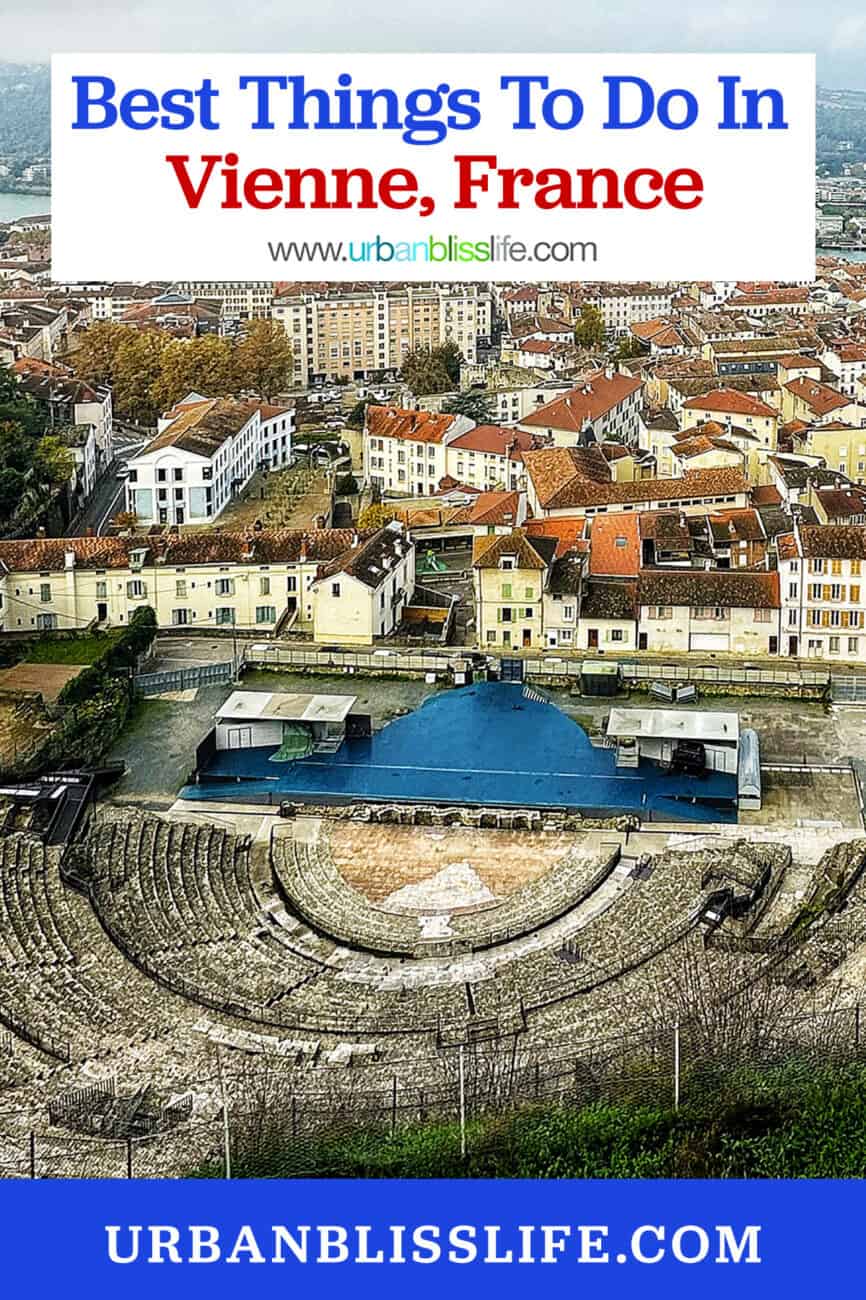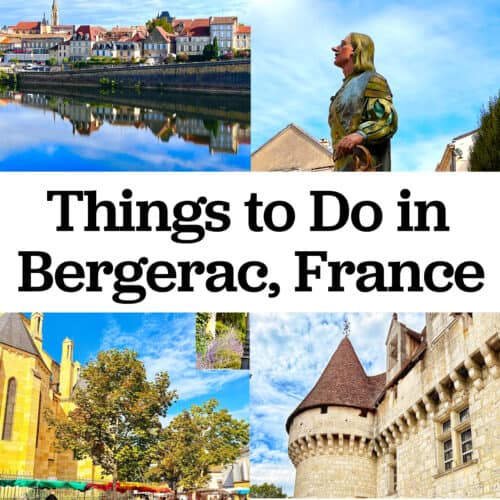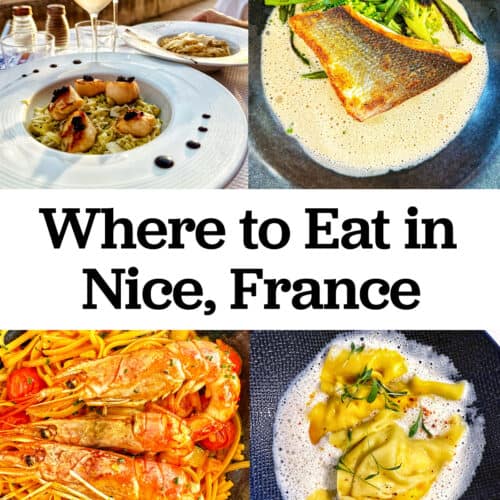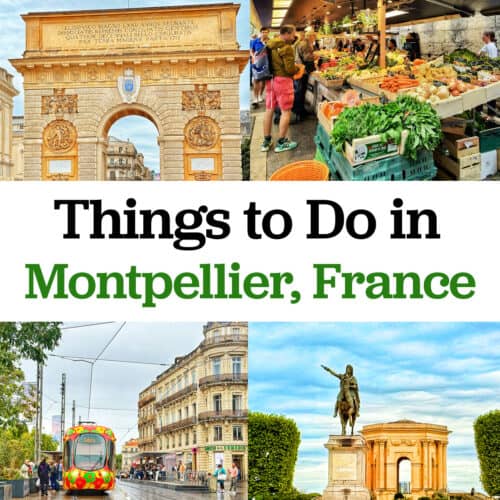Vienne is often overlooked by travelers eager to take in some of France’s more well-known tourist locations. But this lovely city on the Rhone River is rich in both Roman history and French charm. Here’s our guide to the best things to do in Vienne, France.
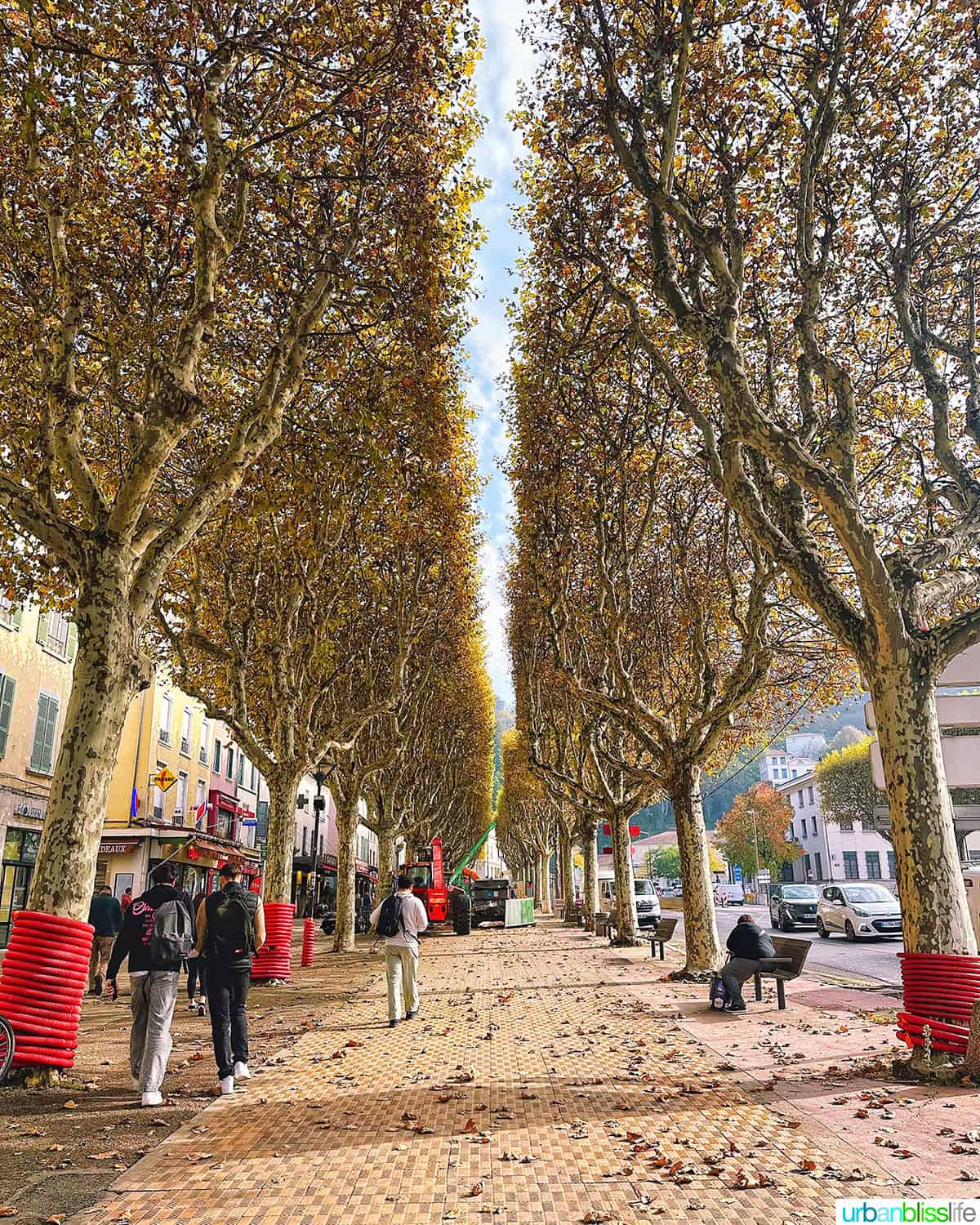
Set in the northern Rhone Valley, about an hour’s drive from Lyon, the midsize city of Vienne is an idyllic blend of old and new.
From well-preserved Roman architecture to medieval castles and modern thoroughfares, you can experience more than 2,000 years of history here in a single day.
Vienne was the penultimate stop on our week-long AmaWaterways cruise. It followed visits to Arles, Avignon, Viviers, and Tournon, before wrapping up in Lyon.
Before docking in Vienne, we hadn’t heard much about the city and didn’t know what to expect. But after spending just one day here, we fell in love with its enchanting mix of young and old, and serenity and vibrancy.
And even if you only have one day here, as we did, you can still see a lot of the city’s most alluring sites.
Jump to:
Temple d’Auguste et de Livie
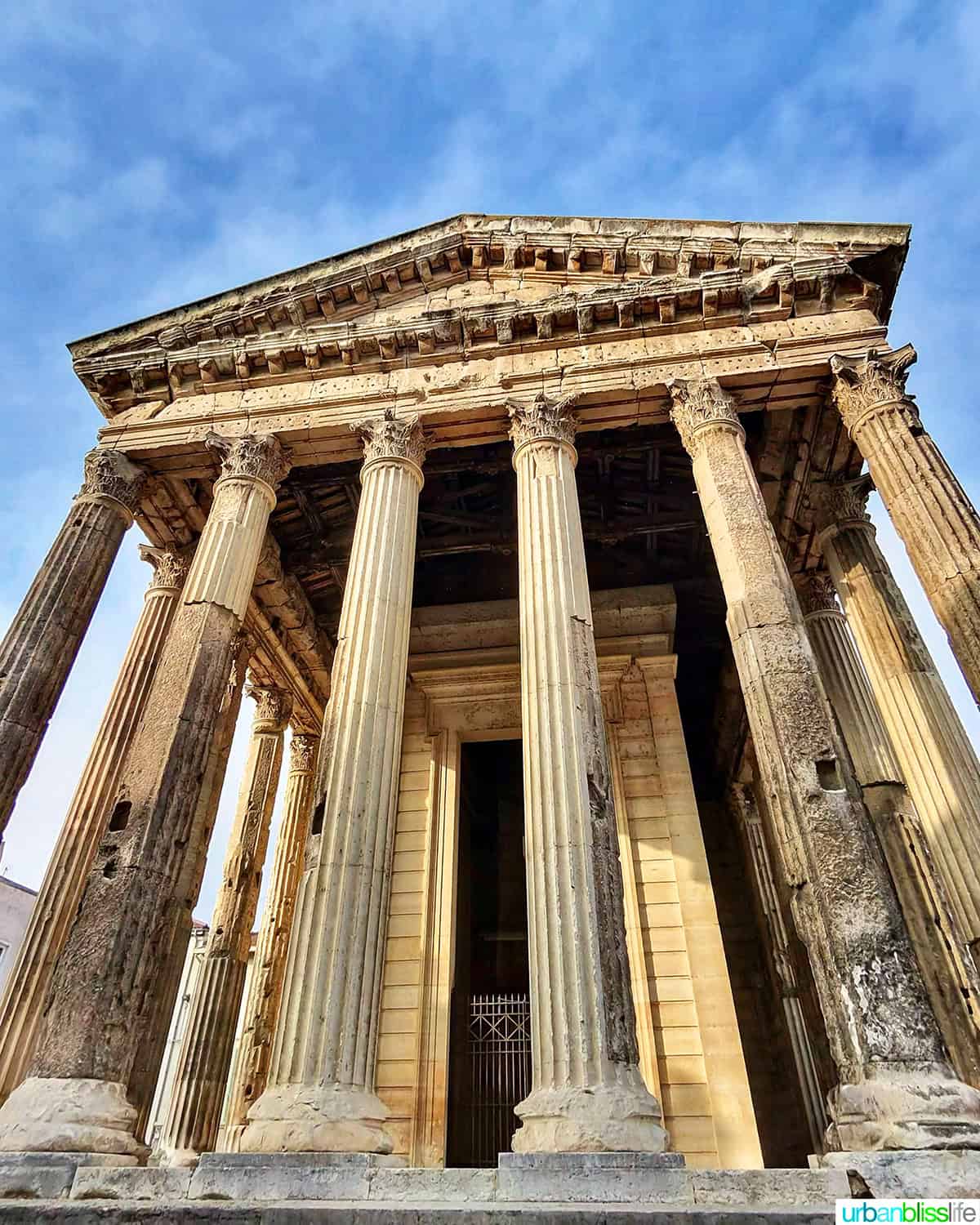
If you’re a Roman history buff or simply enjoy looking at the marvels of ancient architecture and engineering, Vienne will not disappoint. It is chock full of ruins and archaeological sites that date back to the Roman settlement of this area more than 2,000 years ago.
One of the most striking is the Temple of Augustus and Livie. Built beginning around 20-10 BC as part of the town’s main forum, this extremely well-preserved and ornate temple originally was dedicated to Augustus Caesar (Julius Caesar’s son) and his wife Livia.
In the 6th century, it was converted to a church, which protected the structure and helped lead to its lasting preservation. While several restoration projects have occurred over the years to keep columns and other areas of the temple from crumbling, much of the original construction remains intact.
These days, visitors can only view it from the outside, but its grand setting among everyday quaint side streets and shops still serves as an awe-inspiring juxtaposition of old and new.
We could have spent the whole afternoon at this one site alone, but we only had a few hours in Vienne, so we headed to our next stop, another piece of Roman history.
Jardin de Cybèle
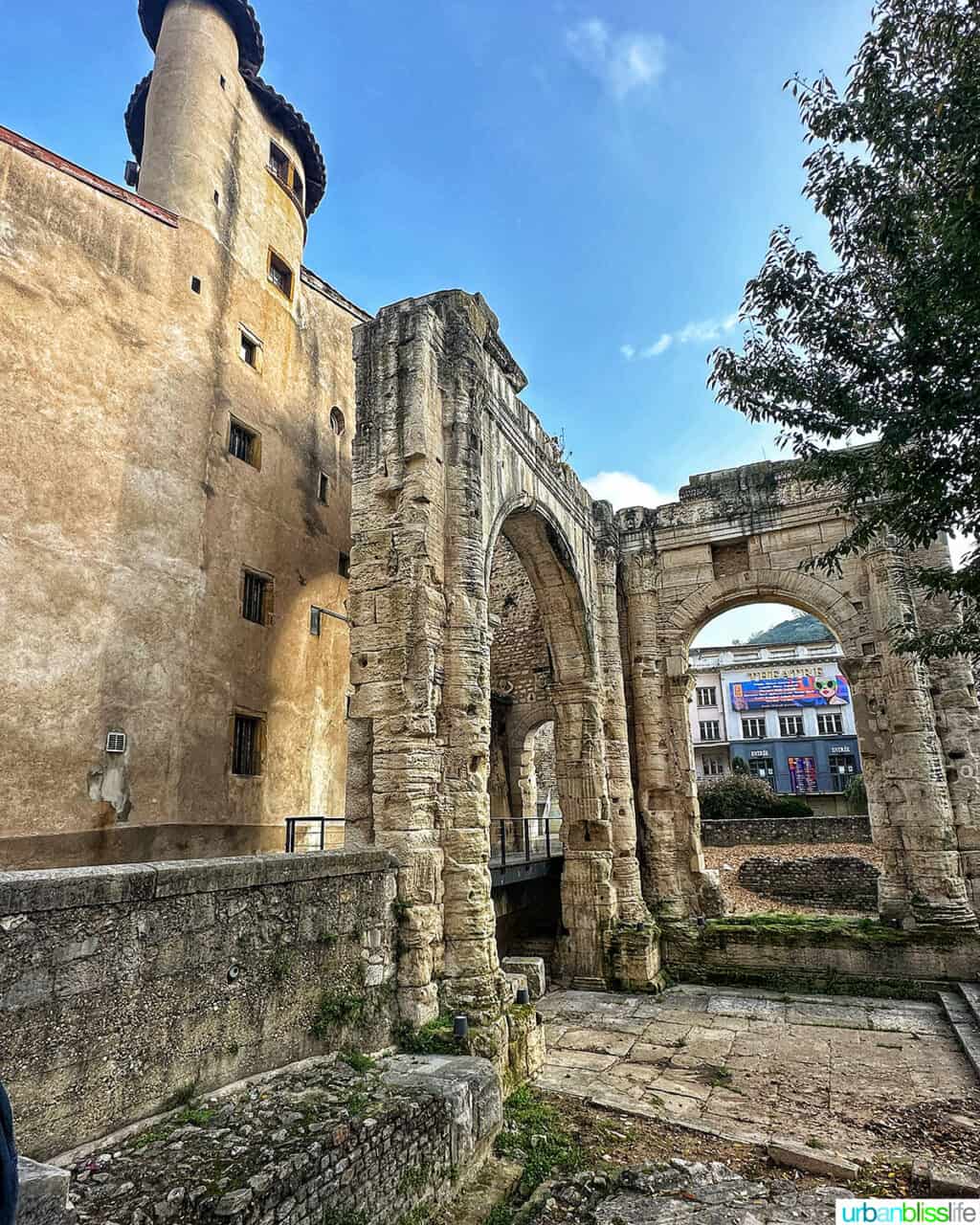
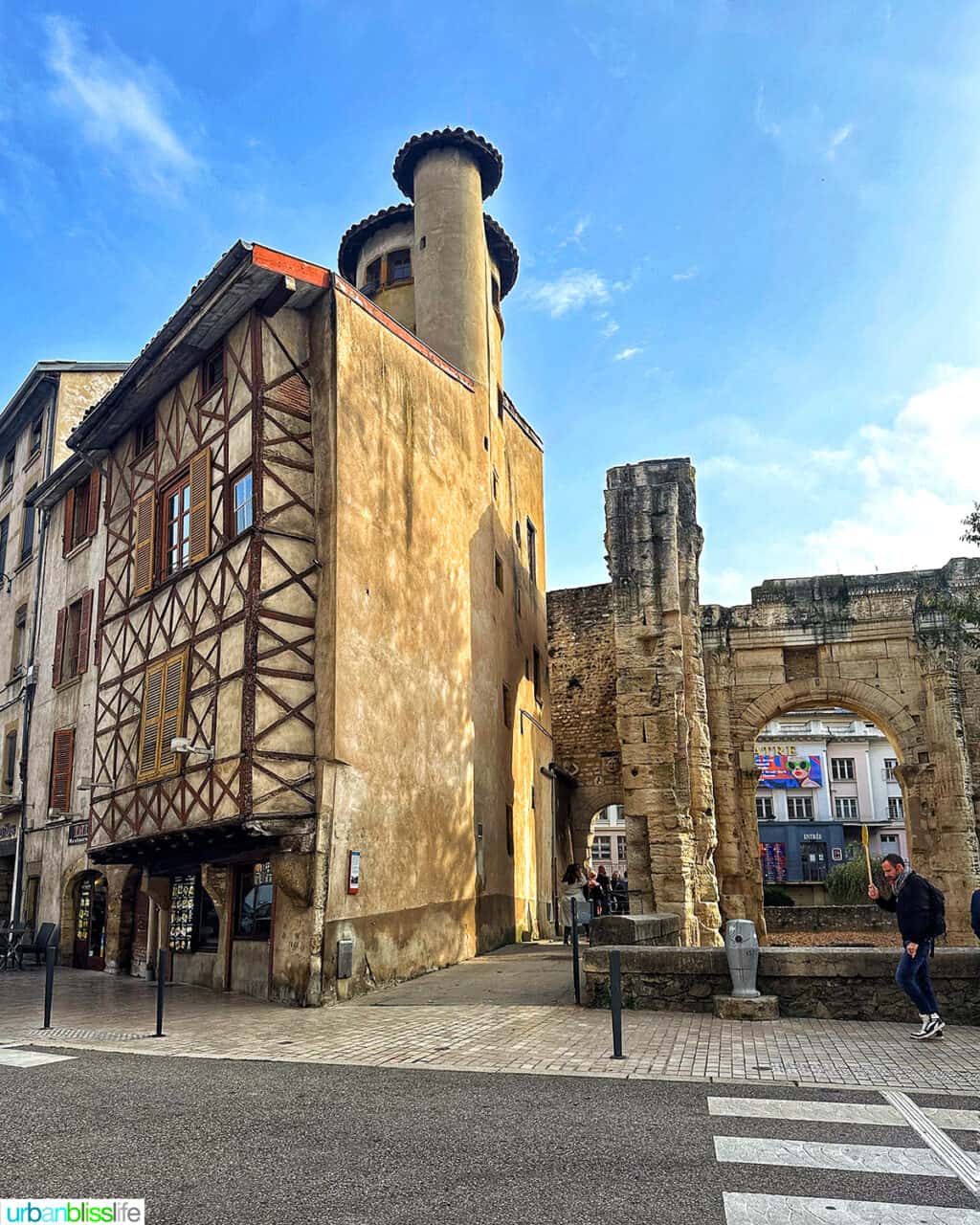
Just about a block from the temple and we arrived at the Cybèle garden. Also part of the original forum complex, the Jardin de Cybèle still has several features of the original Roman site. They include a pair of intricately carved arches that once supported a grand portico, as well as a stone wall that was once part of a large assembly hall.
And right next door sits a still-in-use medieval building with timber-framed walls and circular turrets on the roof.
Plus, archaeologists have also uncovered part of a Roman road which runs through the middle of the site.
The area is still an active archaeological dig, so much of it is off-limits, but in the summer, a nearby area serves as one of the centerpieces to Vienne’s annual jazz festival. So you can enjoy modern-day live music in this beautiful ancient setting.
Cathedral Saint-Maurice
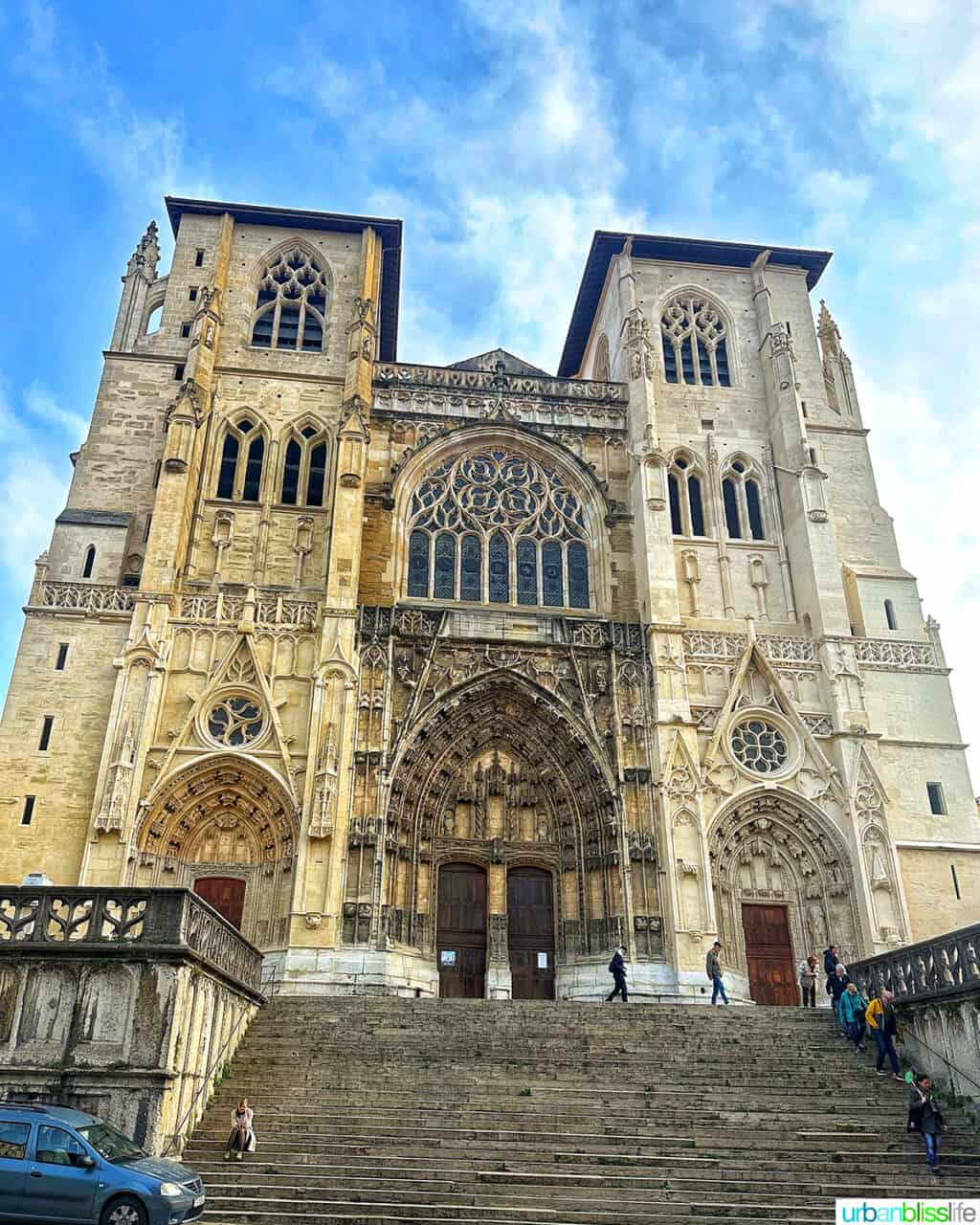
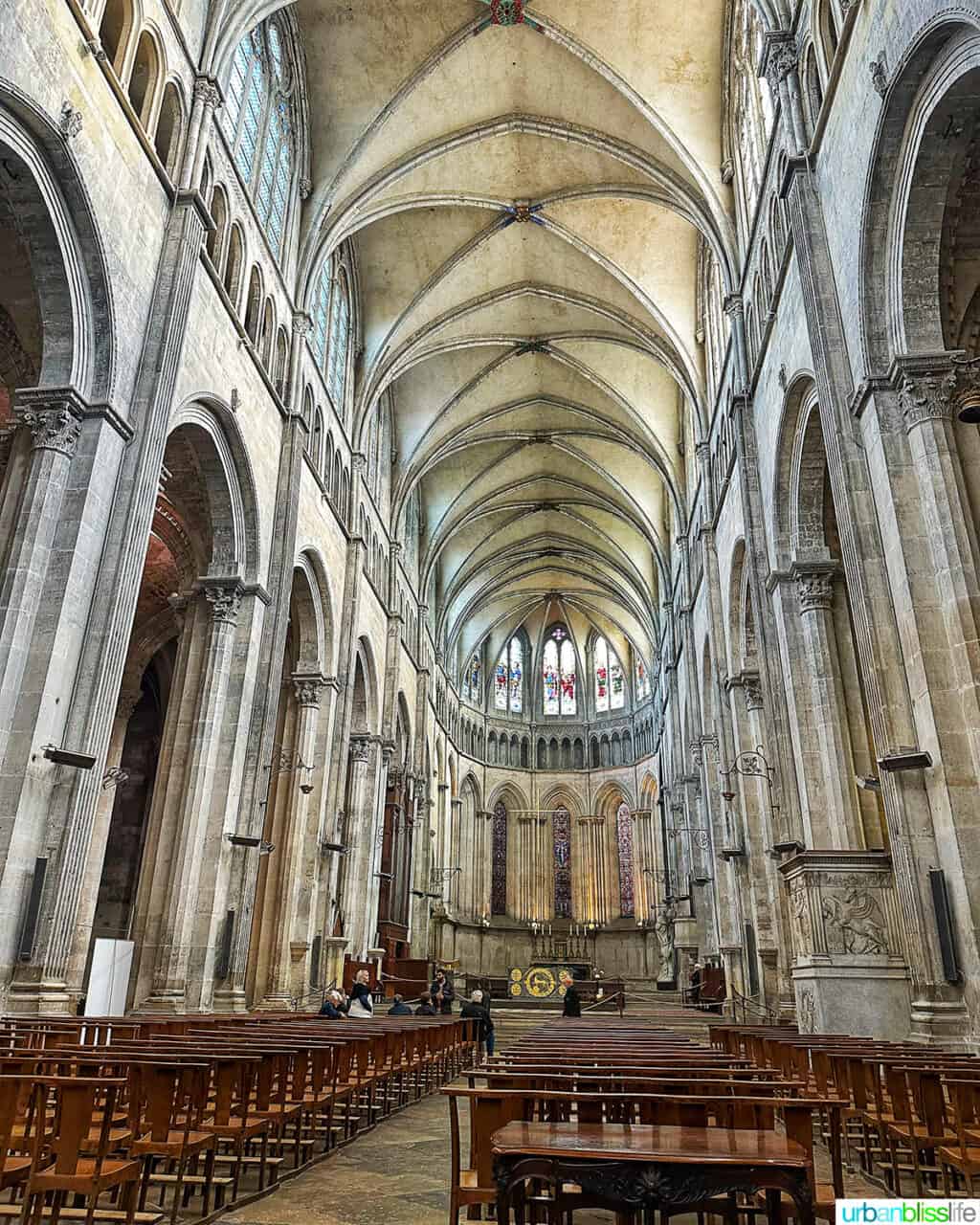
One of the most prominent features of Vienne is the giant Saint Maurice Cathedral. Built between the 11th and 16th centuries, this towering structure lies at the heart of the city.
We ventured inside and were awed by the masterfully created stained-glass windows, soaring ceilings, and mix of architectural styles. They include a combination of Romanesque and Gothic, signifying the shift in religious attitudes during the course of construction.
As the building was completed in the mid-16th century, it fell victim to clashes between French Catholics and Protestants during the Wars of Religion. Notably, several statues of Catholic saints that adorned the cathedral’s exterior were subsequently defaced or removed altogether.
More recent efforts have helped to restore the cathedral, cementing its place as one of Vienne’s most impressive landmarks.
Pipet de Belvedere
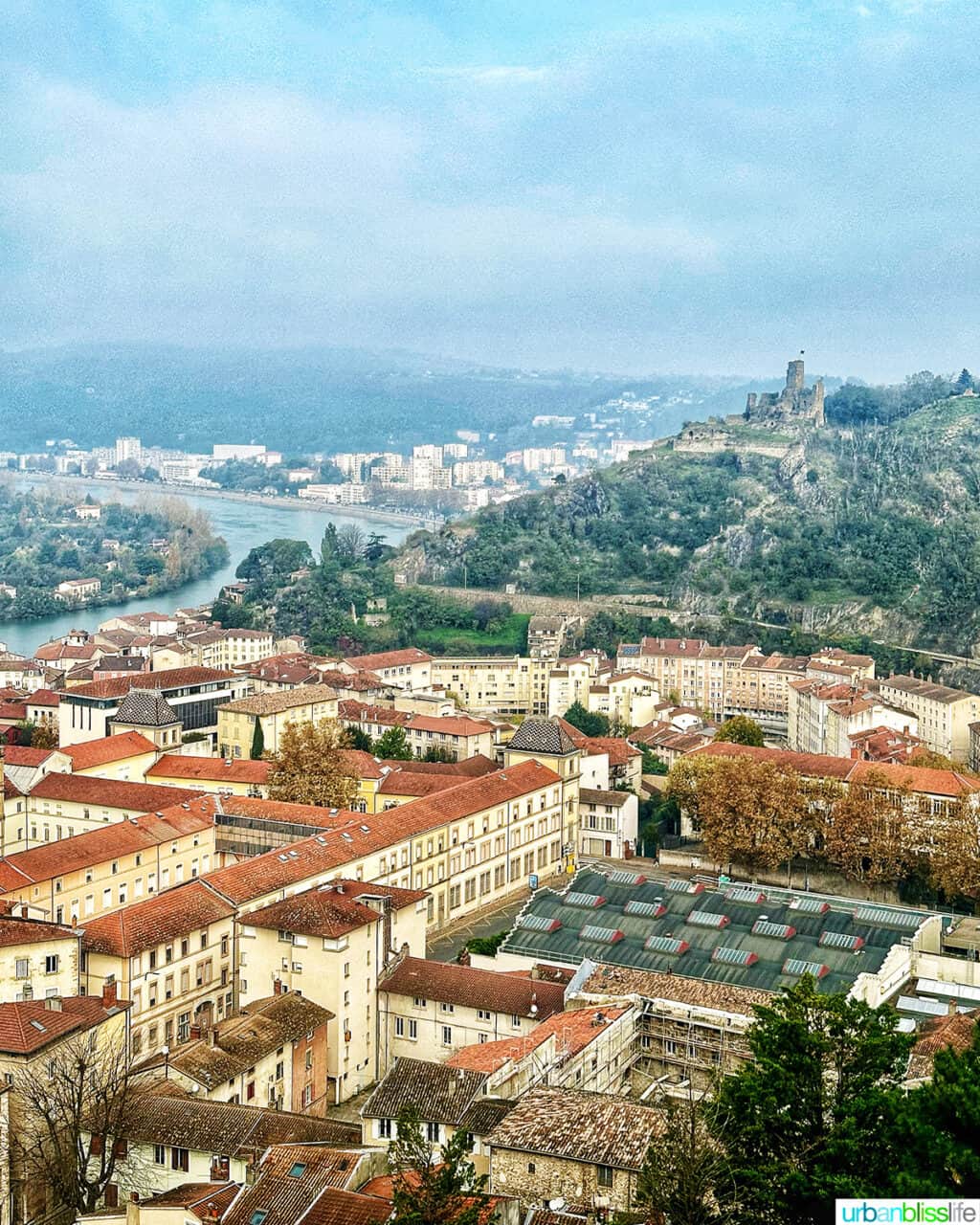

It’s one thing to see the sights of Vienne from ground level. But for a completely different perspective, we headed up to the Pipet de Belvedere.
This hill overlooking the city offers a breathtaking view of Vienne and its local surroundings. From the Rhone River that flows through the heart of the city, to the Roman theater directly below the hill’s main vantage point, it’s truly an incredible view.
The site also features a 19th-century chapel dedicated to Our Lady of La Salette, the subject of a holy apparition purportedly involving the Virgin Mary.
You can walk up to the hill, which is fairly steep and will take around an hour from the city center depending on your pace. Or you can take the (somewhat ear-shattering) little light blue tram, as we did. While this is faster, you may want to bring earplugs. The trip down features lengthy stretches of high-pitched squealing as the driver leaned on the brakes during the descent.
Roman Theater
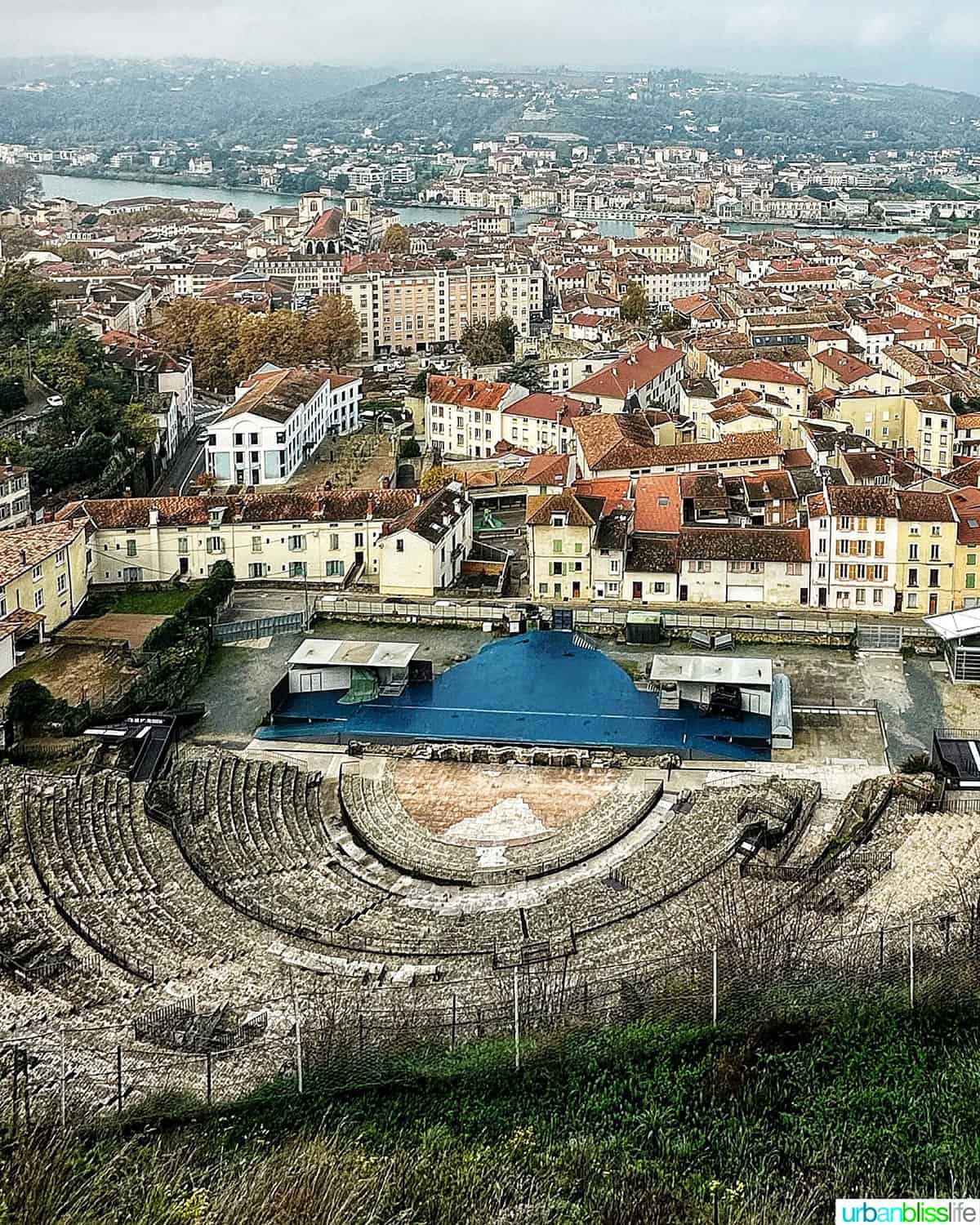
One of the most majestic sights we experienced from the Belvedere Pipet is the expansive Roman Theater (or Théâtre Antique) directly below.
Construction on the site began around 40 CE. When completed, it was one of the largest such venues in Gaul, capable of seating more than 13,000 spectators.
Over time, nature overtook the theater and it remained hidden for centuries. Then in the 19th and 20th centuries, archaeologists rediscovered and excavated the site, eventually restoring it to much of its original state.
As with the Jardin de Cybèle, the Roman Theater is one of the main venues for Vienne’s annual jazz festival, as fans pack its stands for two weeks each summer to once again make it a hub for entertainment.
City Hall
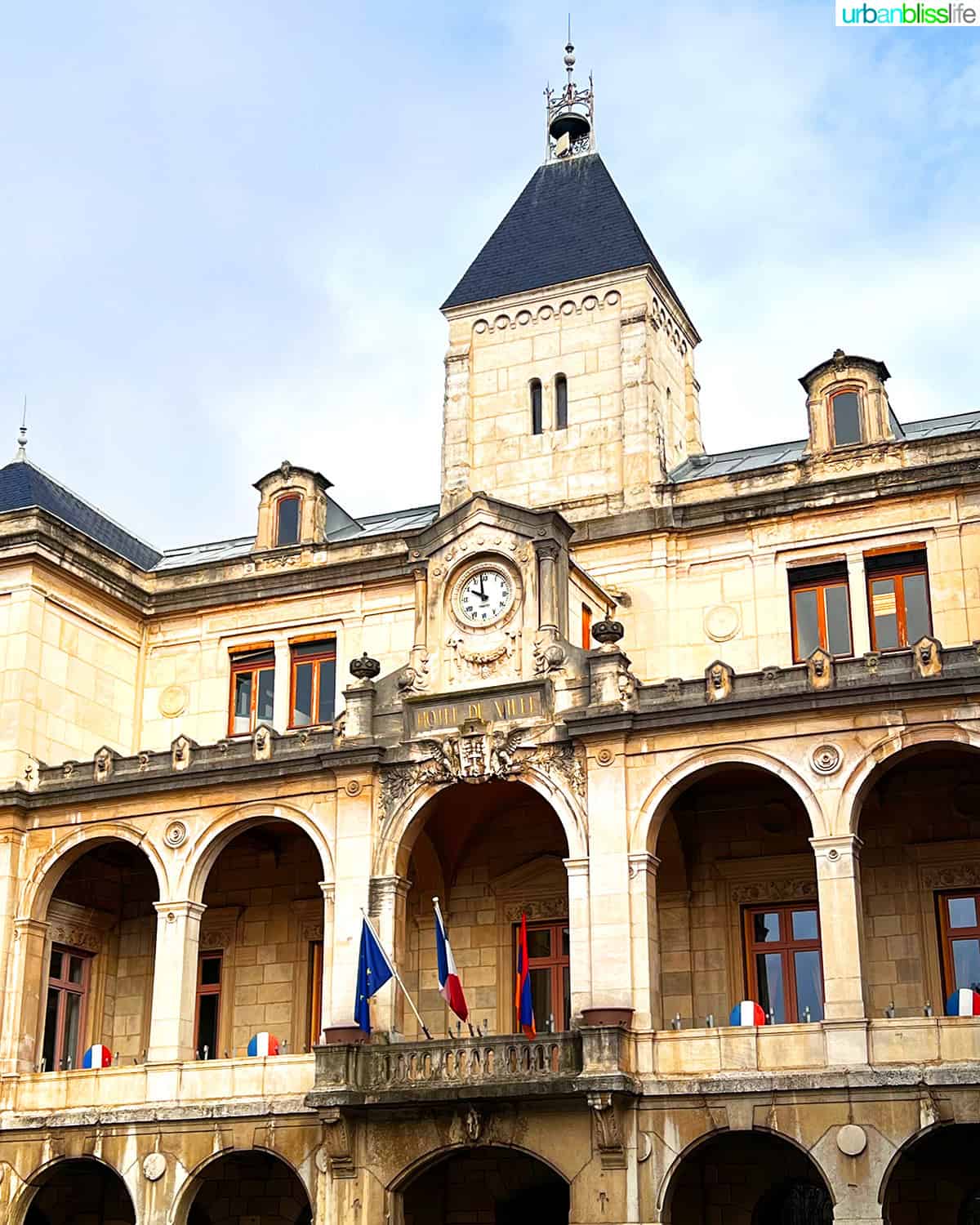
Back in town, a more recent structure dominates part of the city center — the Hotel de Ville, or city hall.
This large building was formerly the private home of the Marquis de Rachais. But according to historians, he had to sell it after running into some money problems.
After the city took it over, officials renovated the mansion and made several changes, including the addition of the clock tower.
In 1975, the French government recognized it as a historical monument. Now it serves as the city’s administrative hub.
Charming boulevards
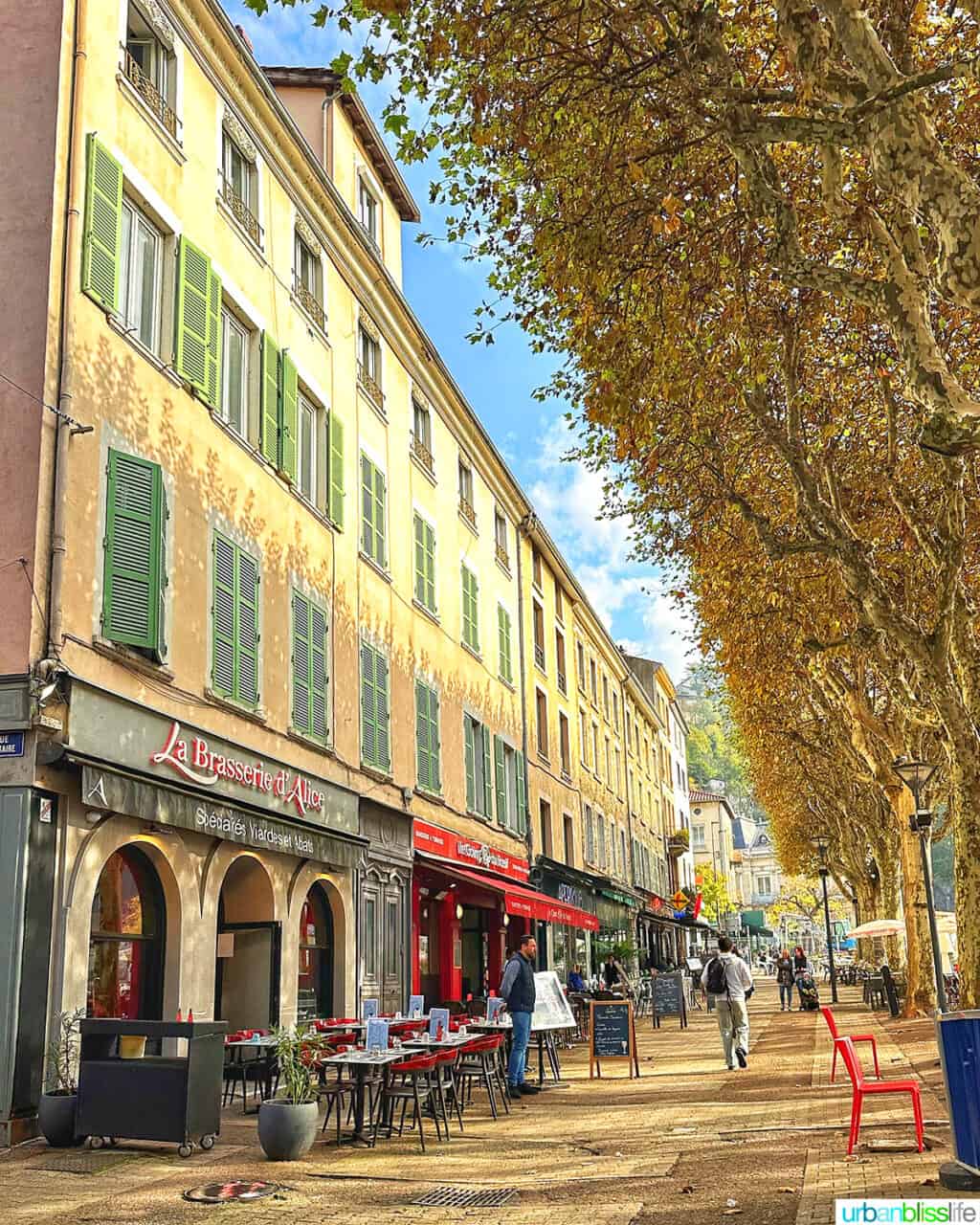
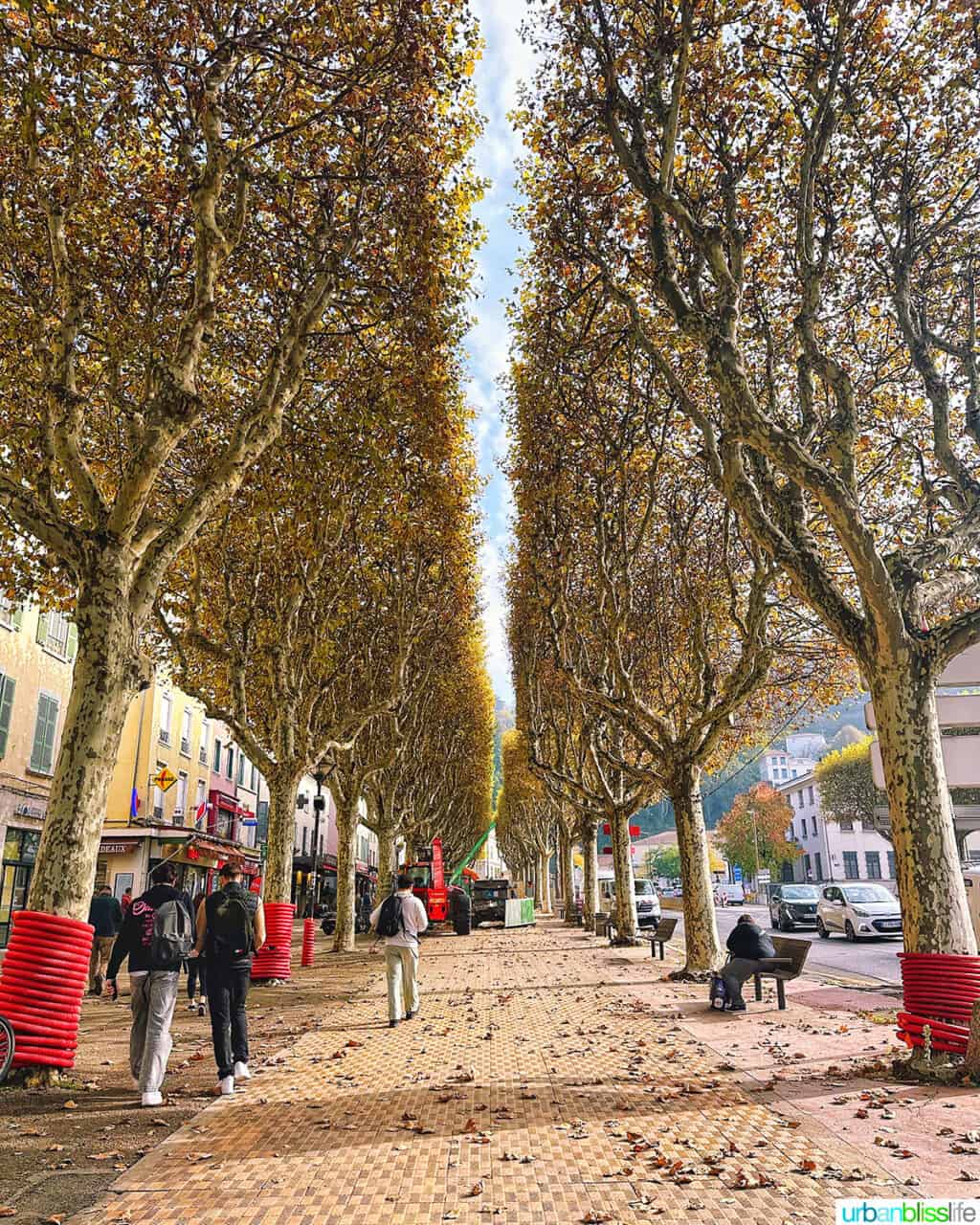
By this point in the day, we were just about done sightseeing and ready for some shopping and a bite to eat. Luckily for us, Vienne has several alluring boulevards full of chic stores and sidewalk bistros and cafes.
One of the largest in the Cours Marc-Antoine Brillier. This central artery runs from the Rhone river through the heart of the city and is usually bustling with activity around midday. It’s a great area to stop for lunch and do some people-watching.
For shopping and some snacks, we headed over to the nearby Cours Romestang. This beautiful tree-lined boulevard features boutiques, cafes, and plenty of patisseries, as we soon discovered.
Pâtisseries
Ok, pretty much every French town has a patisserie. But we ended up stopping into no less than four in just a single afternoon in Vienne. Each one has their own unique, and beautiful, selection of pastries.
Here are our recommendations if you’re thinking of making a pastry pit-stop or two while in Vienne.
Paul
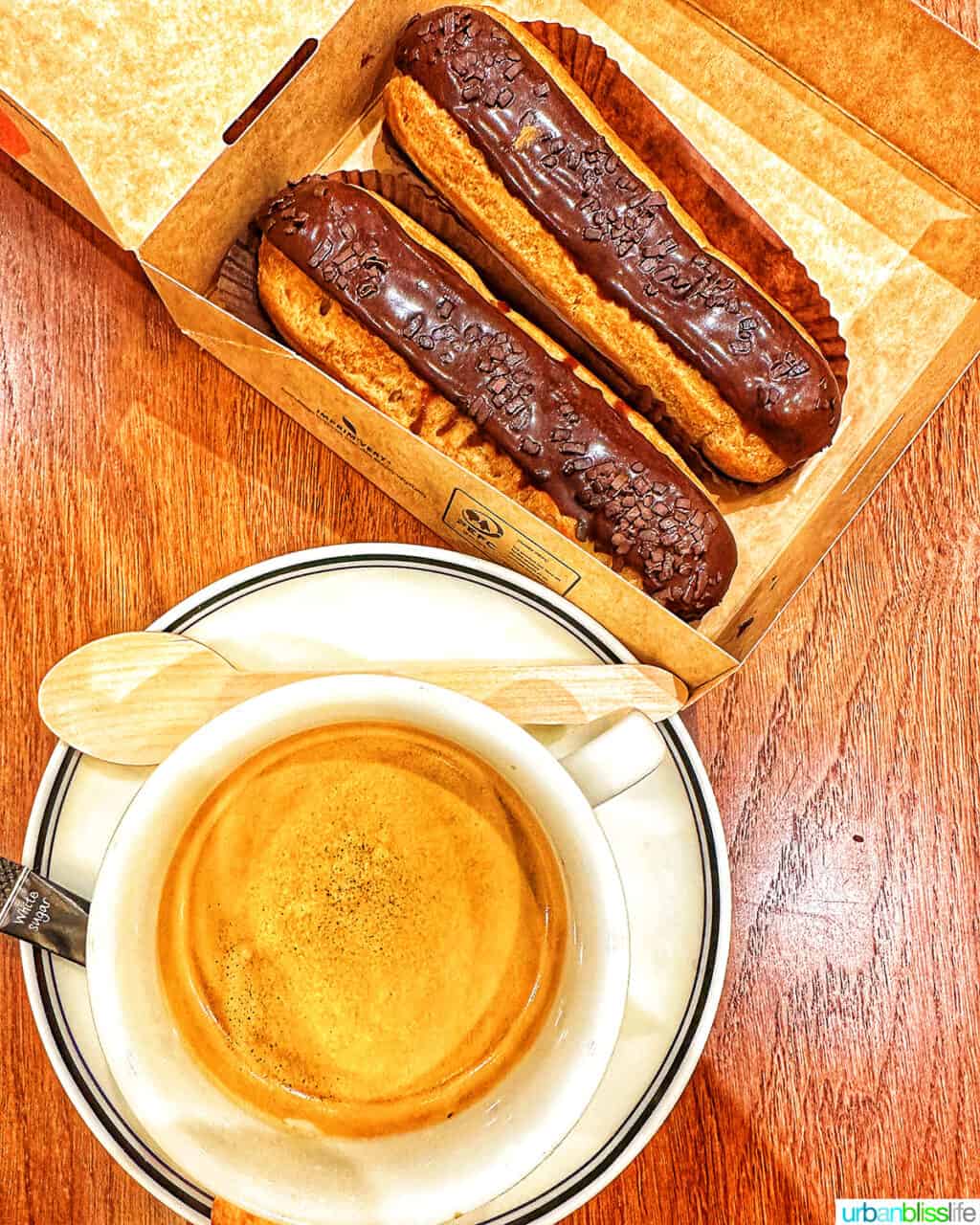
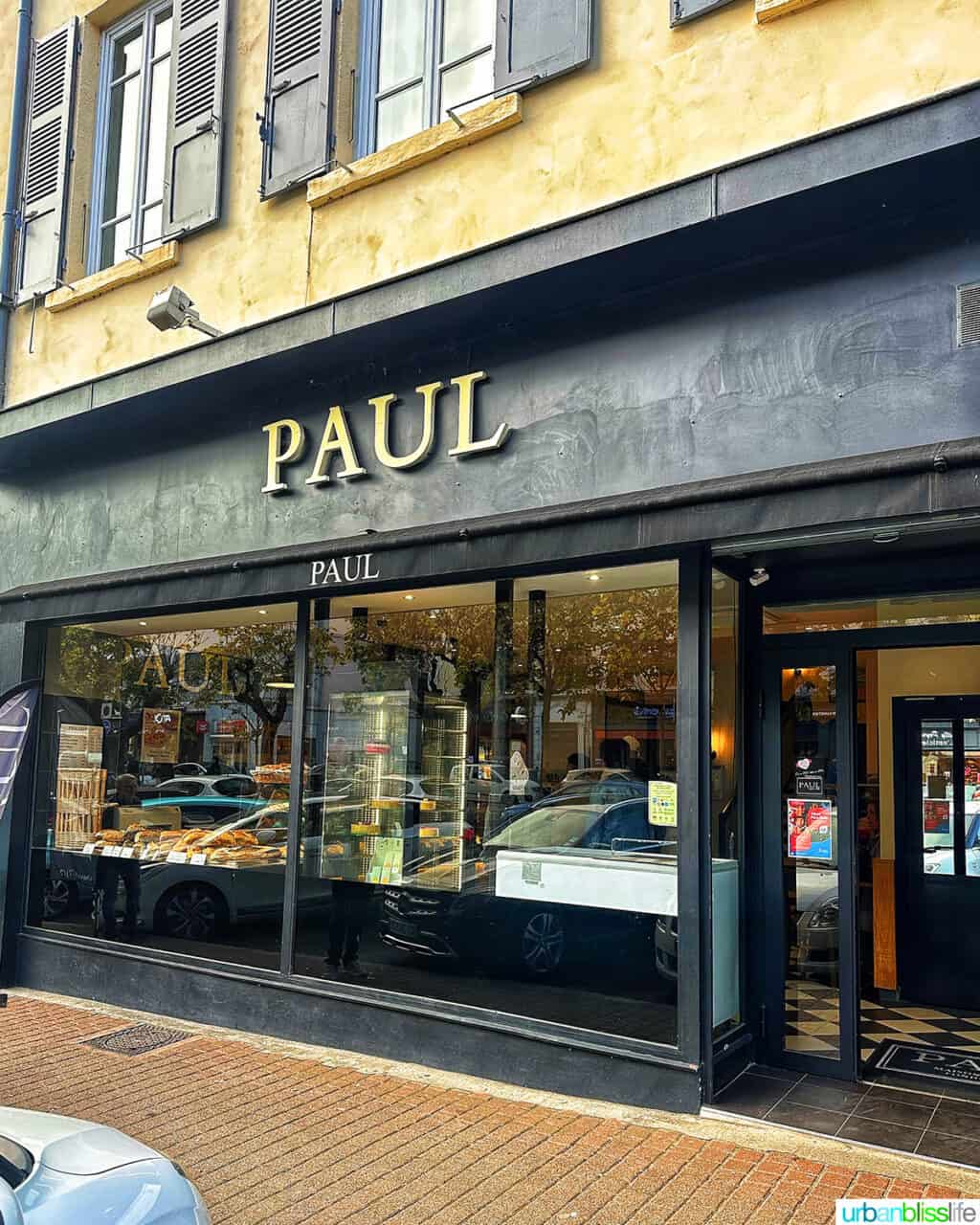
Located on the Cours Romestang, Paul is actually more of a bakery than a patisserie, but they still feature a wide array of pastries to satisfy your sweet tooth. Plus, it also has a cafe tucked away in the back, so you can do what we did: order some pastries and espresso and enjoy them on site!
La Mie Caline
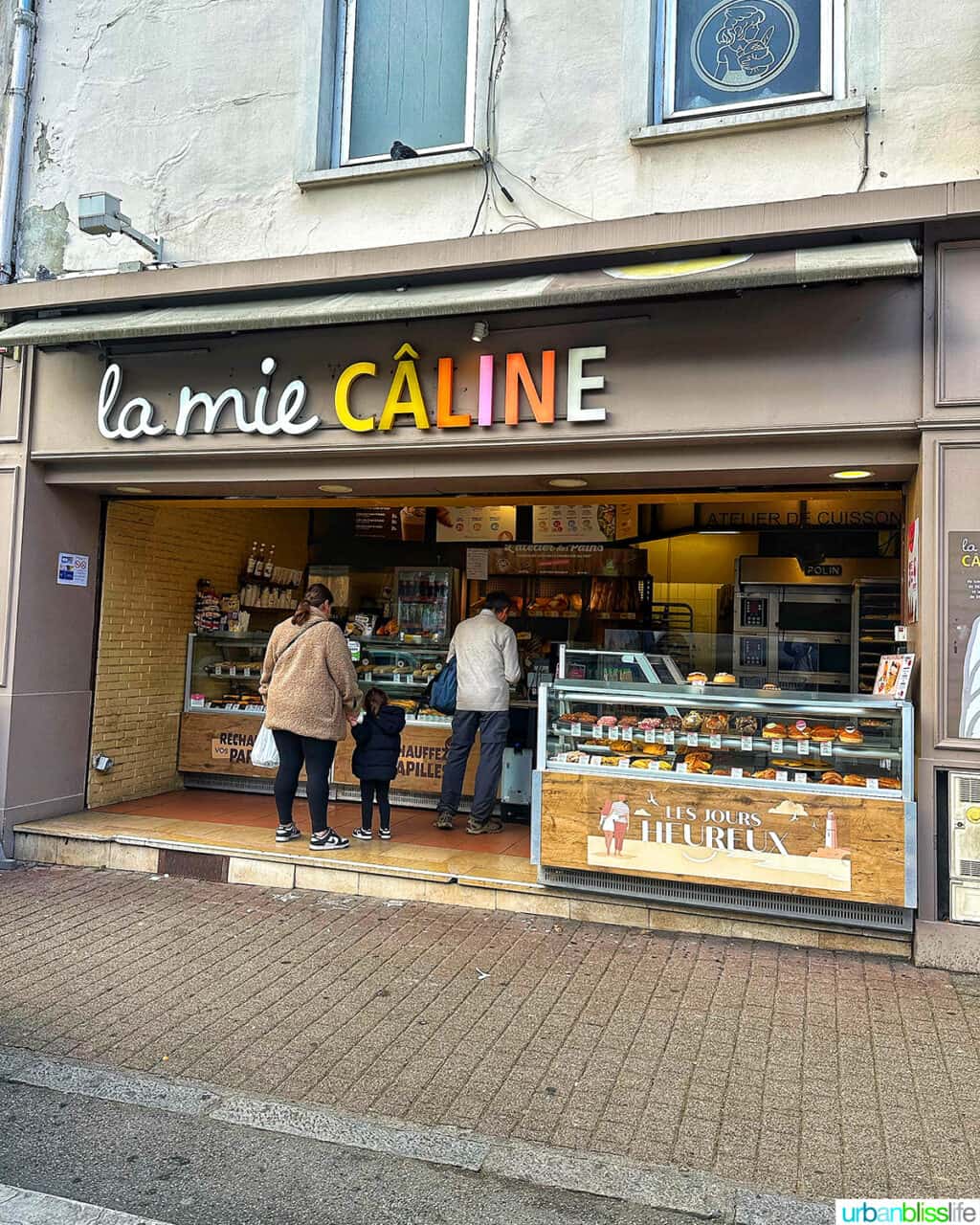
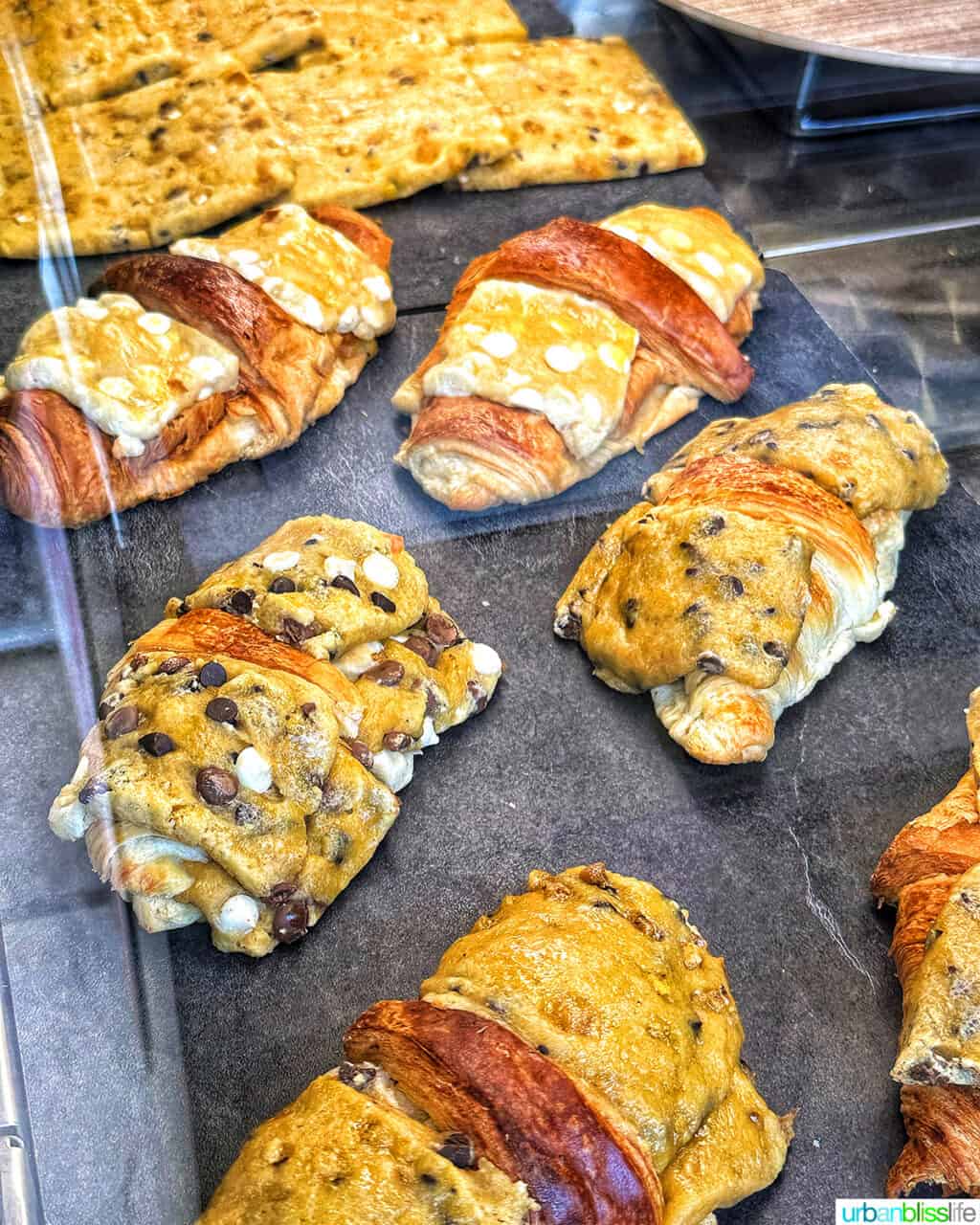
Just a few steps from Paul and you’ll arrive at La Mie Caline. Translating to the “Cuddly Crumb,” this cute roadside patisserie and sandwich shop is a great place to pick up a bite to go.
While they have all the favorites here, like eclairs and tarts, they also had a wide selection of colorful doughnuts, muffins, and what they call “crookiz,” which is a croissant with chocolate chip cookie dough layered on top. Did we get one? Yes. Is it for everyone? Probably not!
La Gaterie
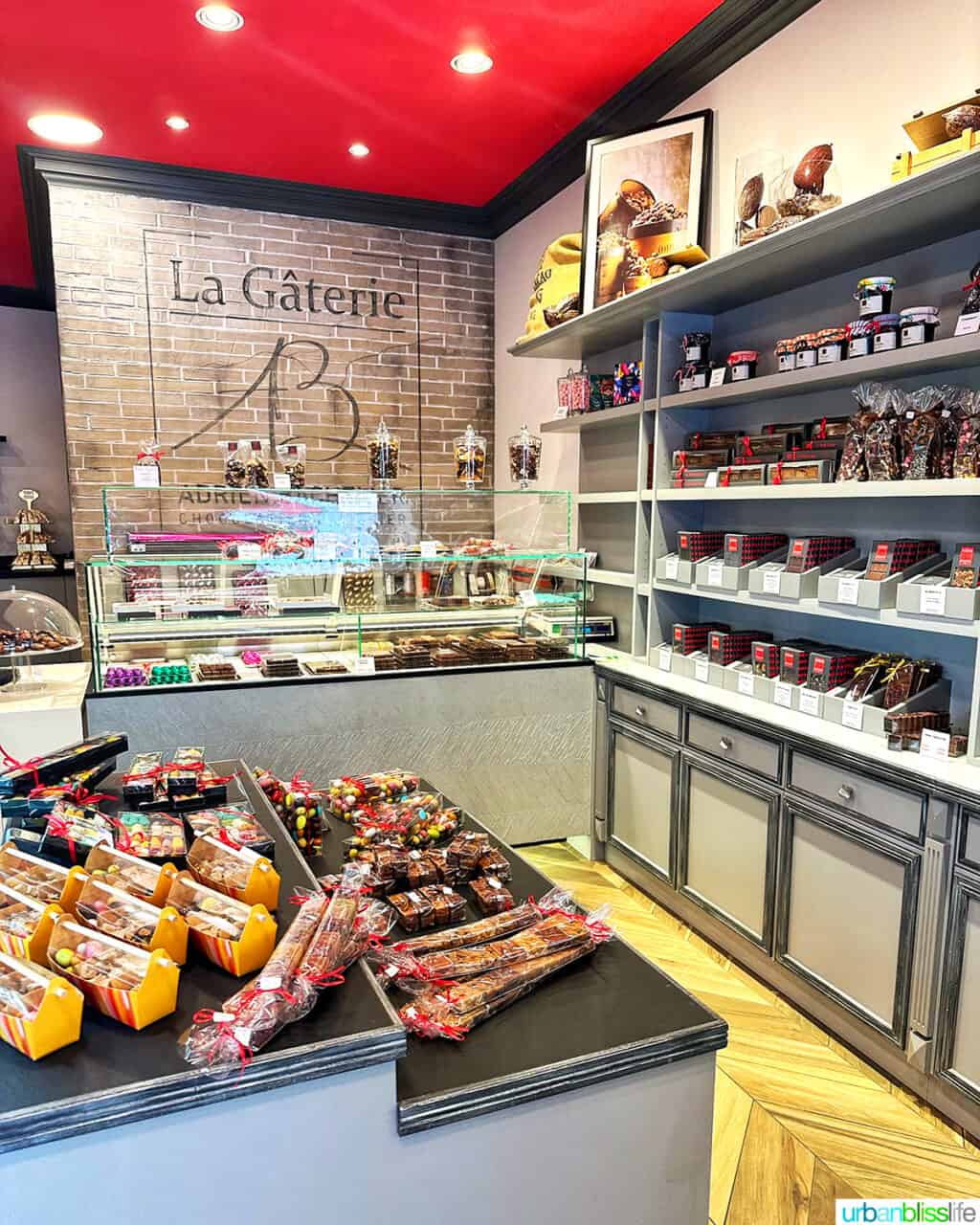
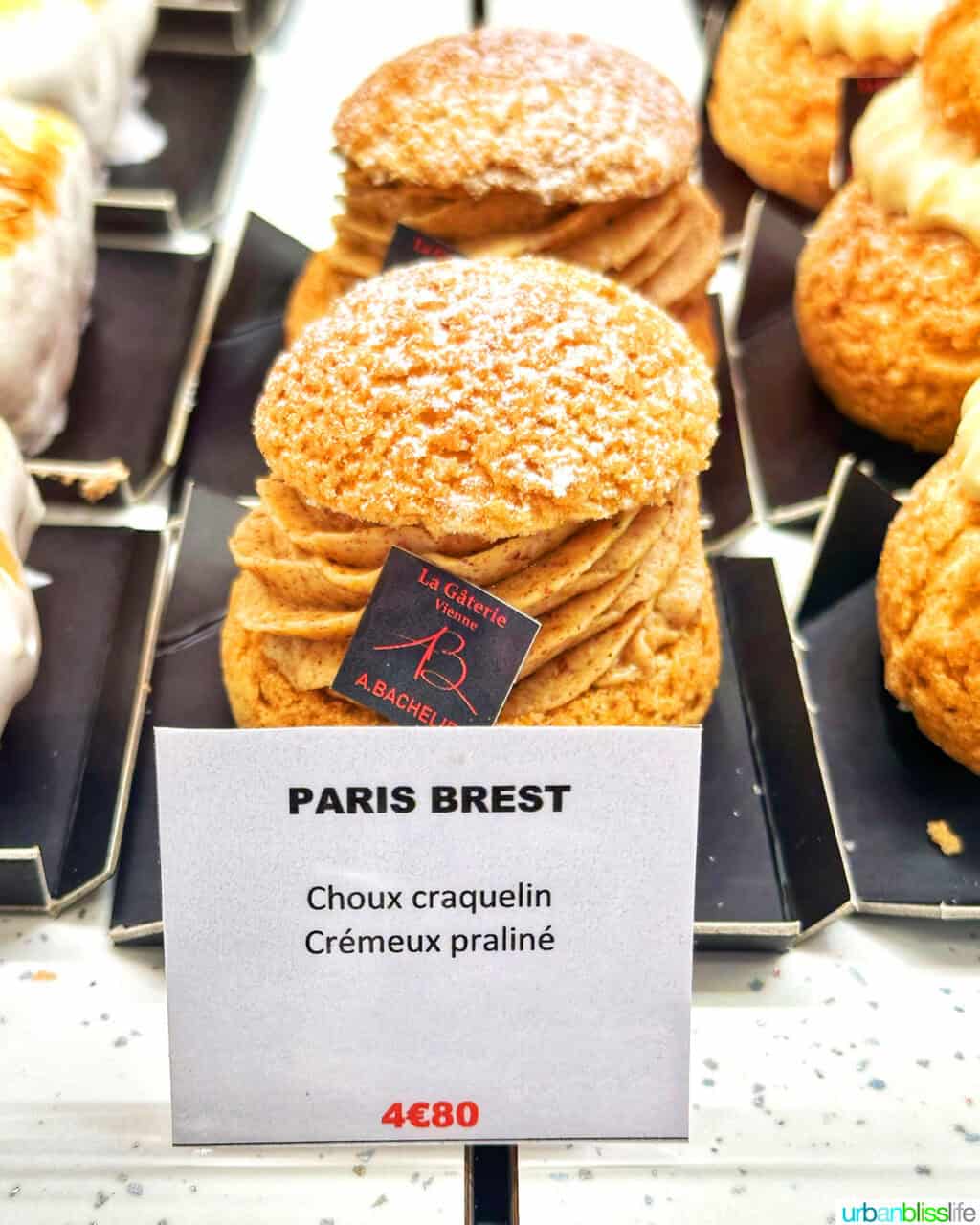
Our third pastry stop of the day was at La Gaterie, also on Cours Romestang. This was the most traditional of the patisseries that we visited. They had a wide selection of pastries and cakes, as well as pre-packaged chocolates—ideal for gifts.
We couldn’t resist buying a couple more treats here, including the deliciously decadent Paris Brest.
Emilie and the Cool Kids Cookies and Coffee Shop
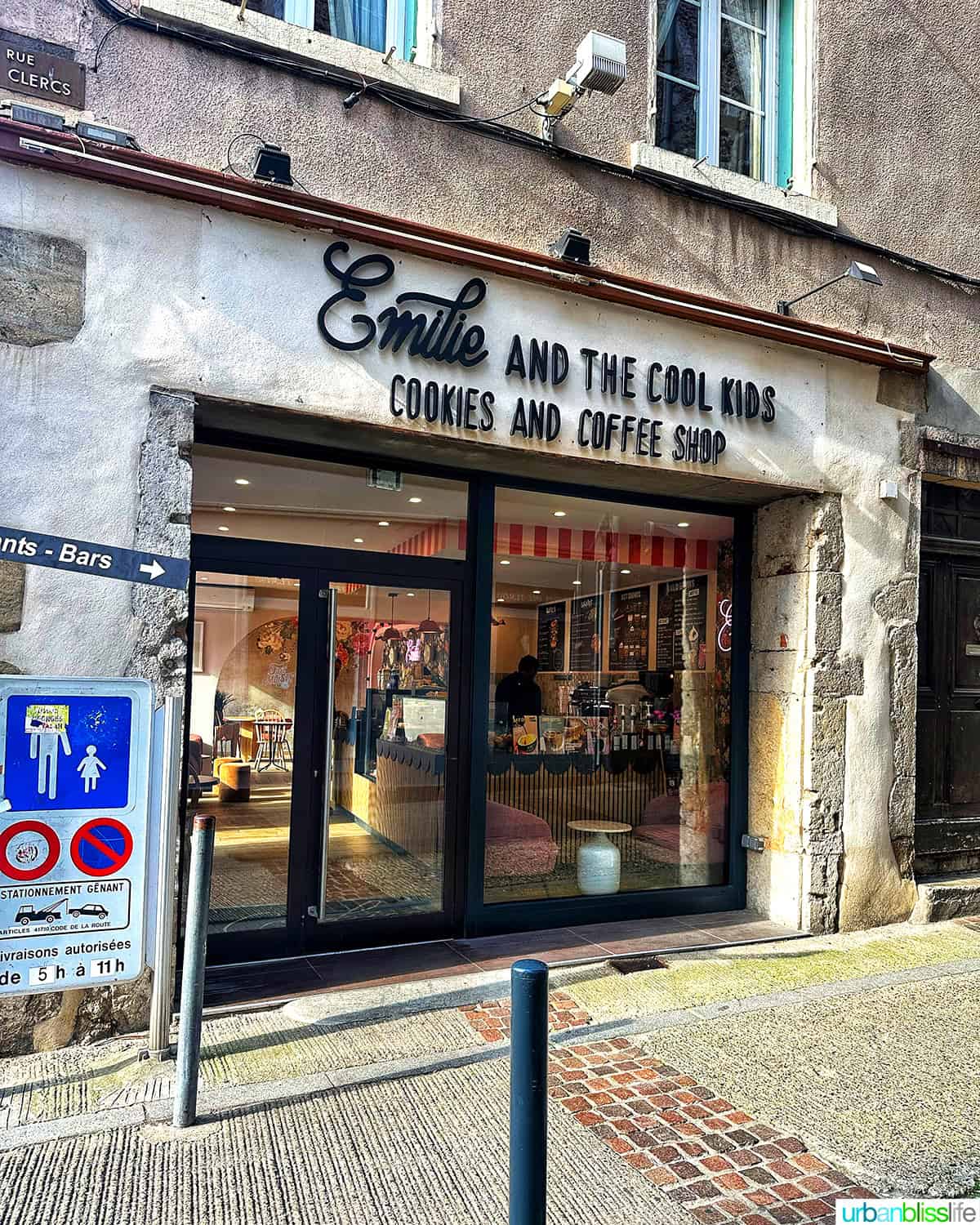
If you’re looking for something a bit different in the pastry category, check out Emilie and the Cool Kids Cookie shop. This is actually a chain of cafes with locations all over France, but it caught our eye, especially as this modern shop is located right across the street from the ancient Roman temple.
And they don’t just serve cookies and coffee. You can also get bagels, hot dogs, salads, and smoothies.
Other things to see in Vienne
Saint-Romain-en-Gal archaeological site
Referred to by some as a mini Pompeii, the Saint-Romain-en-Gal archaeology site is among the largest venues focused on ancient Gallo-Roman life in the area.
At the time, Vienne was a central stop for the movement goods between the Mediterranean and Roman provinces further north, so the site is rich with history.
Located on the west side of the Rhone river, the complex features stone roads, and the remnants of homes, baths, and other structures which all serve to create a snapshot of what life was like in Vienne two thousand years ago.
The site also features a modern museum showcasing ancient artwork, mosaics, and other artifacts from the Roman period.
It’s open from from 10am to 5pm everyday, except Monday.
Château de la Bâtie
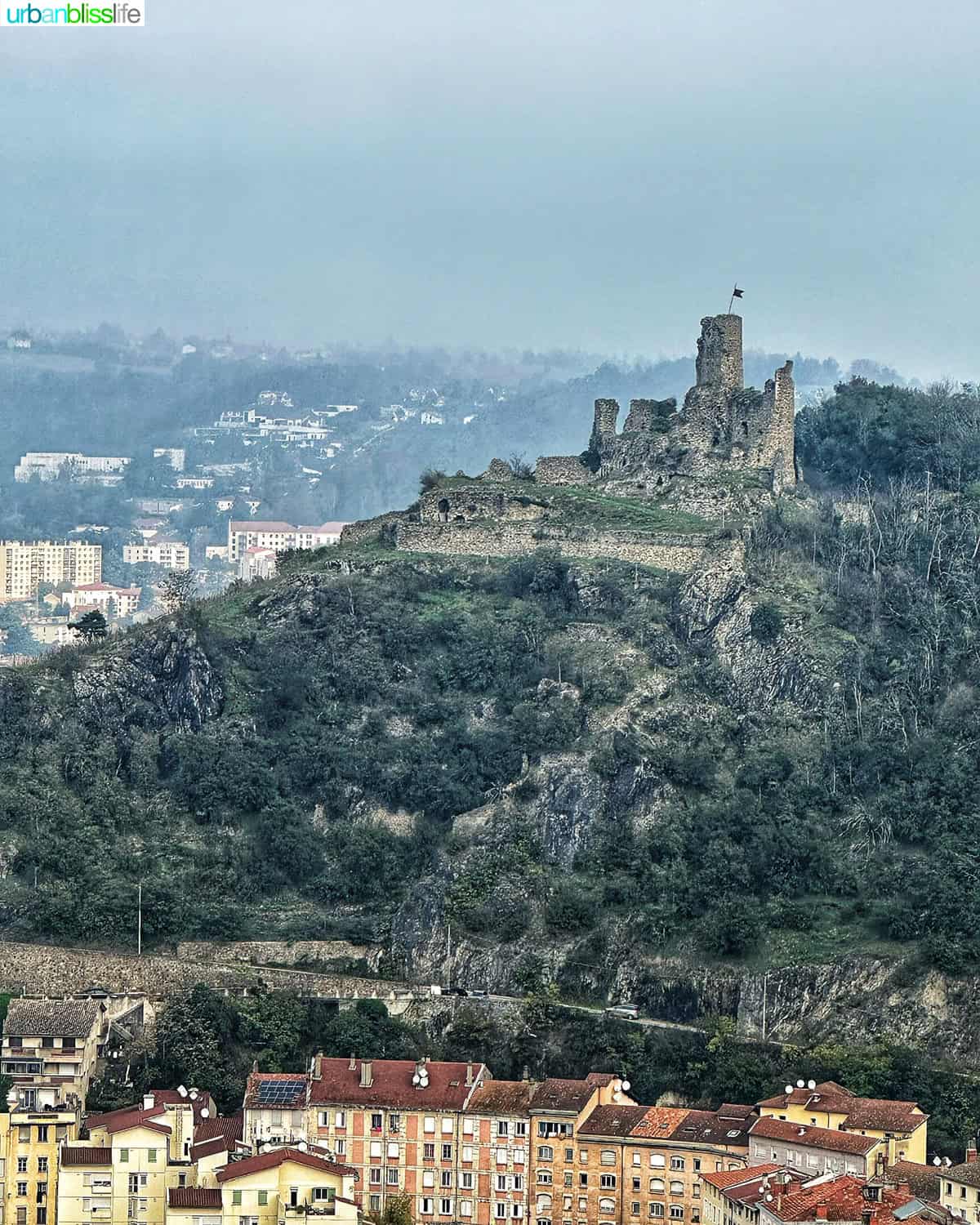
For a glimpse of Vienne’s medieval past, turn skyward and check out the Chateau de la Batie.
Perched on a hill high above the city,this 13-century fortress was part of the area’s fortification system, helping to warn of and guard against potential threats.
It was ordered to be built by the Archbishop at the time, who believed it to be a safer residence than his home inside the city.
Now only a shell of the castle remains, but it offers a dramatic reminder of the diverse history of Vienne.
Tour de Valois
Located on the right bank of the Rhone facing Vienne’s city center, the Valois Tower dates back to the 14-century and rises 30 meters high.
It was commissioned by French King Philippe VI after he seized the city of Vienne from the Holy Roman Empire. He then combined it with the area of Saint-Colombe on the west side of the river.
The tower then served as a way to protect and fortify the newly-united town from any retaliatory attacks.
Eventually, the tower was converted to a warehouse and now is only occasionally open to the public. However, it still serves as an imposing landmark overlooking the city.
Visiting Vienne
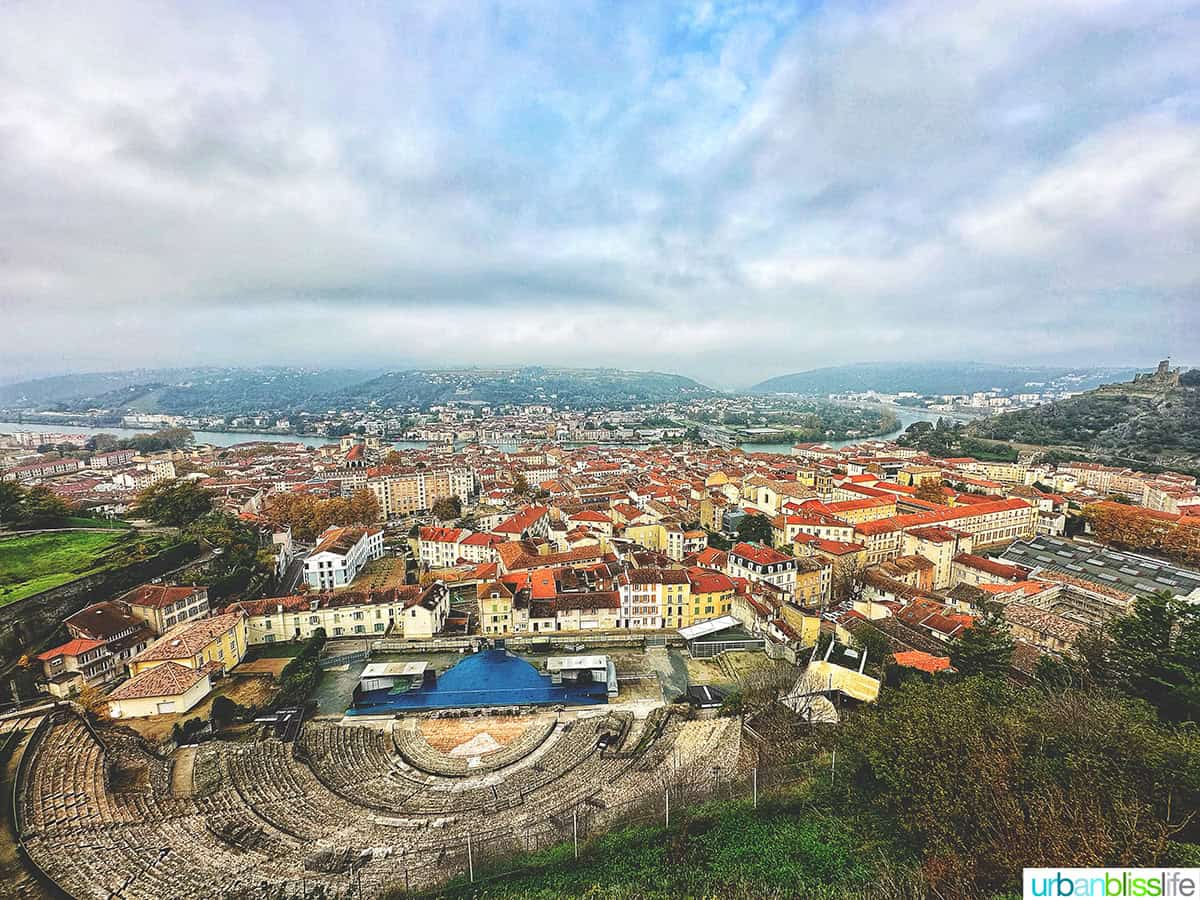
The closest big city to Vienne is Lyon, about 20 miles to the north. And the easiest way to travel from one to the other is by train.
At least one departs every hour from Lyon’s Part-Dieu or Perrache train stations and the ride takes about 20 minutes. The cost for a one-way ticket is under $10.
Or you could visit the way we did, as part of a cruise along the Rhone river. Not only do you get to see lovely Vienne, you can explore several other stops along the way. It’s a convenient, low-stress way to experience this gorgeous part of France.
If you visit, please be sure to let them know that you read about it on Urban Bliss Life! And if you snap some pics, tag us @UrbanBlissLife and #UrbanBlissLife on Instagram, TikTok, Twitter, and Facebook.
✈️ Planning a trip?
Here are my favorite items and resources I use whenever I travel.
🧳 Away Luggage – I’ve traveled all over the world with Away luggage and can’t say enough about their durability and style.
🎒 Backpack – This is my go-to travel backpack. It has pockets everywhere and enough space to fit everything from my laptop to extra shoes.
📍Apple Air Tags – I always hide these airtags away in my luggage, especially if I check bags. That way I can track them and know exactly where they are.
👚 Packing cubes – Take the stress out of packing and make sure everything fits in your bags with this set of compression packing cubes.
⚡️Portable charger – I always travel with a portable power bank for my devices, and I’ve found this one to be the most reliable and long-lasting.
🔌 Travel adapter – Planning to travel to multiple countries? I use this all-in-one international travel adapter to make sure my devices work wherever I go.
🛩 Flights – I’ve found the best savings savings on flights here.
🏨 Hotel – I always snag the best lodging deals with this booking tool.
🚙 Rental cars – You can get some great savings on rental cars on this site.
I use all of these products and earn a small commission through these affiliate links.
More France travel ideas
Disclosure: This was part of an AmaWaterways press trip along the Rhone River. All opinions and photos are, as always, our own.

